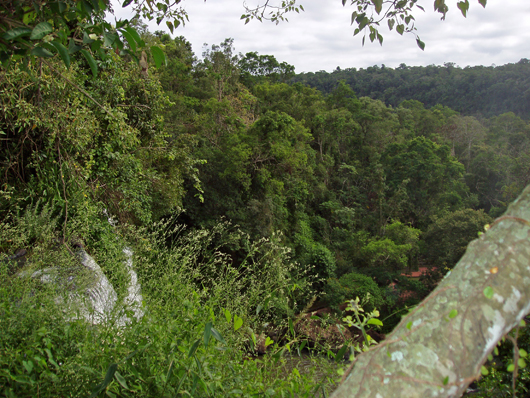Copenhagen: Nature has the solutions
07.12.09
On the opening days of the Copenhagen Climate Conference there has been a call from IUCN urging leaders meeting in Copenhagen to include nature’s solutions to reduce emissions and cope with impacts of climate change in a post-2012 deal.
“Managing nature will play a key role in our ability to cope with the changing climate and reduce emissions,” says Julia Marton-Lefèvre, Director General of IUCN. “A massive investment in nature, in the way we protect it, manage it and govern it will take us from where we are today to the low carbon economy of the future.”
IUCN's strong call is a reminder that acting on and mitigating against climate change does not just stem from emissions reductions. In many respects reducing the emissions from our houses, cars, and industry is a great deal easier than looking after the landscapes that sustain us.
"Nature is ready to provide powerful tools for both climate change mitigation and adaptation. These are already available, cost-effective and sustainable. We should act now, and not wait until 2012, to deploy these needed adaptation and mitigation solutions," said IUCN in their opening statement.

Rainforests play an important role in both reducing emissions and
coping with the effects of global climate change © Dan Ryan
“Managing and conserving ecosystems can increase resilience and reduce the vulnerability of people to the impacts of climate change,” says IUCN’s Head of Ecosystem Management Programme, Neville Ash. “Ecosystem-based adaptation to climate change should be included in a post-2012 adaptation framework.”
REDD (Reducing Emissions from Deforestation and Degradation) is one of the mechanisms on the table that could be deployed almost immediately and is being tested around the world in pre-REDD projects. While deforestation accounts for approximately 17% of greenhouse gas emissions, several recent studies suggest it could contribute to almost 30% of the mitigation solution over the next decade.
“Preventing deforestation and restoring forest areas through REDD-plus can combat climate change in a cost-effective way while generating tangible benefits for local livelihoods and biodiversity,” says IUCN’s Director of Environment and Development Stewart Maginnis “REDD-plus must be an integral part of the future climate deal”.
Related links:
Switzerland: Korea to host next World Conservation Congress
27.11.09
The 2012 IUCN World Conservation Congress will be held in Jeju, in the Republic of Korea, the IUCN Council decided in its 73rd regular meeting.
UK: Potential to restore billion hectares of forests around the world
26.11.09
 Land areas around the world, bigger than Canada, have been identified as having potential to be restored to good quality, healthy forests, a new study has found.
Land areas around the world, bigger than Canada, have been identified as having potential to be restored to good quality, healthy forests, a new study has found.
Guyana: Norway pledge investment in forests
12.11.09
 The government of Norway has pledged up to $250 million in the protection of Guyana's forests. The agreement will ensure an initial payment of $30 million into the countries REDD+ fund and the rest will come if this investment succeeds in reducing emissions and tackling poverty.
The government of Norway has pledged up to $250 million in the protection of Guyana's forests. The agreement will ensure an initial payment of $30 million into the countries REDD+ fund and the rest will come if this investment succeeds in reducing emissions and tackling poverty.
Over 12,000 plants on the Red List
03.10.09
It’s that dreaded time of year again - the time when it is spelled out so clearly how badly we are failing the planet. The latest update of the IUCN Red List of Threatened Species shows that 17,291 species out of the 47,677 assessed species are threatened with extinction.